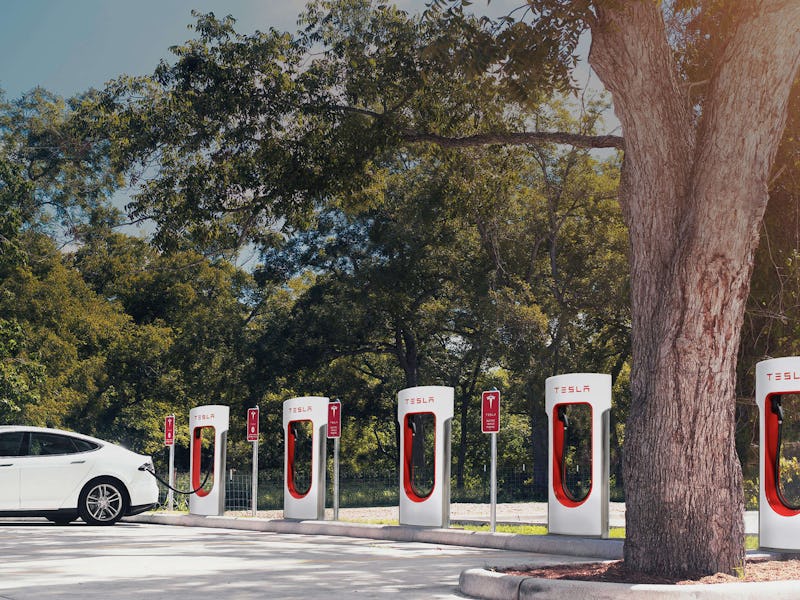Elon Musk and his company, Tesla, often make headlines. The general population knows that Musk, some shadowy prophet figure, exists, and that there are some fancy cars on the road that run on electricity and basically drive themselves. Beyond that, though, the public might not know much. Tesla announced on Monday that it will put an end to free Supercharging for its fleet, charging owners “a small fee” to re-up their EV’s figurative tank. Until today, then, Teslas were free to Supercharge.
Musk and his squad want Tesla owners to charge their vehicles like they charge their smartphones, “either at home or at work, during the hours you’re not using it.” Superchargers, which continue to crop up all over the United States (and the world), make charging the battery exceptionally fast. Before the update, Superchargers were free: Tesla owners could simply plug in, kick their feet up on the dash, and then — a short time later — drive off, free of charge. Teslas ordered after January 1, 2017, though, will no longer be guaranteed free Supercharging: After 400 kWh, or 1,000 miles, of free charging, owners will be met with small fees that will “cost less than the price of filling up a comparable gas car,” Tesla writes.
Current Tesla owners, and those who receive their Teslas before April 1, 2017, will continue to enjoy free Supercharging. In other words, Model 3 owners will not enjoy free Supercharging: Model 3s won’t ship until July 1, 2017, at the absolute earliest.
Some non-Supercharger charging stations still provide free electricity, because electric vehicles are good.
How Much Will It Cost?
Right now, according to the Tesla website, it costs about $12 to charge a 90D Tesla battery from dead to full. A gasoline-powered car costs a little under $40 to fill up, depending on your car, MPG, and local prices. (Gas prices are presumably less stable than electricity prices, so these current equivalencies could change dramatically.) If you’re using a 48 amp wall charger, the full charge will take just under nine hours. With a 72 amp charger, it will take just under six hours. These are the chargers prudent Tesla owners have inside their garage, so — like, say, a refrigerator — they cost a little money to run.
But with the Supercharger, charging a battery to full capacity takes just over one hour — and it’s free. Supercharging makes Teslas even more attractive; Tesla knows it has an ace in the hole. With increasing pressures from shareholders to better monetize the company, and increase profits, the end of free Supercharging is a sensible move, though it is a slight bummer.
The United States Department of Transportation says the average American drives about 13,000 miles per year. We’ll make some assumptions, and then calculate the maximum possible amount an average American would have to spend Supercharging, were he or she to buy or receive a Tesla after April 1, 2017. This Tesla owner’s first 1,000 miles are free, which leaves 12,000 miles to account for. If this owner does not own a wall charger, she’ll rely only on the Supercharger network. If 300 miles costs $12, then 12,000 miles costs $480. Based on Tesla’s own estimates, we can calculate that 12,000 miles in gas costs about $1,600.
For a Model S or Model X owner, $480 per year is presumably pocket change. For would-be Model 3 owners (though Musk would rather they become S or X owners, instead), it’s a bit more of a decision. But given the alternative — gasoline — this change shouldn’t be much of a red flag. Musk is undoubtedly smiling: After this news, Tesla stock is on the rise.
